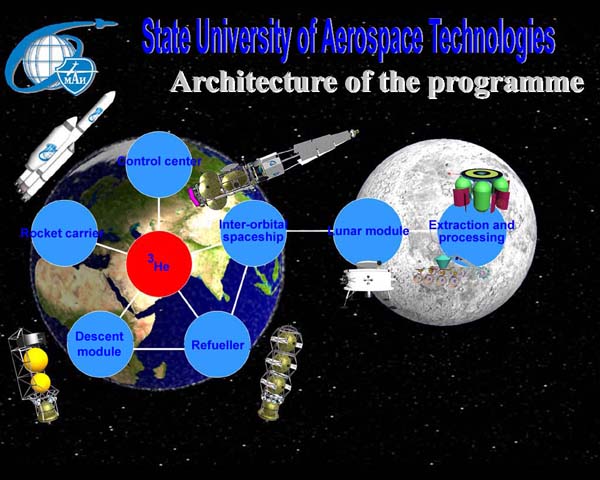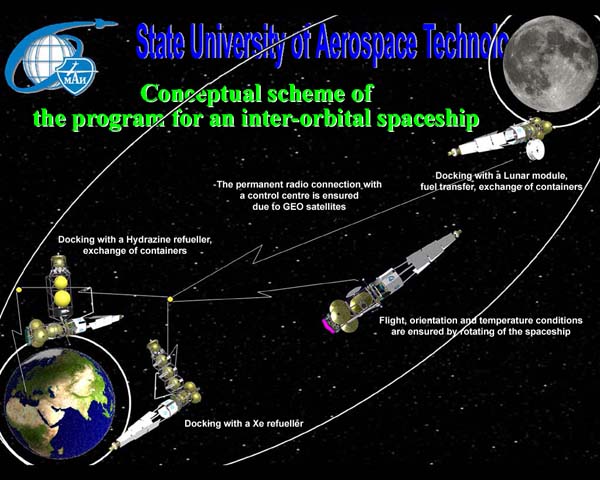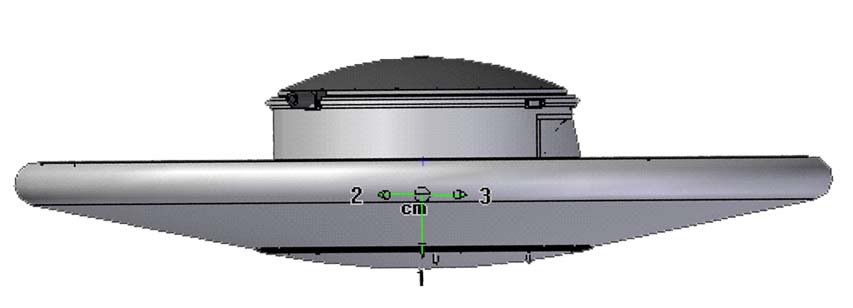The request for proposal: The designing of the project and infrastructure for carrying of the liquefied light isotope of helium (3He) from the Moon surface to the Earth, using a specified account of the mass position, design and trajectory characteristics of the inter-orbital spaceship the Earth – the Moon – the Earth.
The feasibility study (economy):
The mission of the project was formulated as “Let’s make the Moon not only shine, but also heat!”
The competitor analysis, according to the method: “The five forces of Michael Porter”, was carried out. It helped to estimate this part of the market as a very perspective. The general architecture of the program was formulated.
The base principals of the ads company are: 1) The total ecological safety of the generating energy, 2) The new technological development and their use in the daily life.
The rough cost estimation was carried out using this methodic:
![]() , where the first sum is: the summation of the stages of system development, the second sum is: summation of the stages of the life cycle, Сij is the cost of engines, trusses, tanks, etc producing during the j stage.
, where the first sum is: the summation of the stages of system development, the second sum is: summation of the stages of the life cycle, Сij is the cost of engines, trusses, tanks, etc producing during the j stage.
The statistic about the similar projects, Deep Space 1, SMART 1, Moses-C, were used in order to determine the cost of the first fly model. The cost was calculated according to the simplified, univariate model:
![]()
As the result, the prognostic assessments were made. For instance, the cost of R&D and producing the inter-orbital spaceship fleet, consists of seven vehicles, was estimated as 2174,1 billon $, meanwhile the exploitation expenses are 1243,5 billion $ per year.
The estimates table and NPV graph (if all expenses were taken in zero year):


NVP = Σ DCFt(discounted stream of payments) = 112,5066
Profitability index: РI = Σ(+)/Σ(-) = 9,850155
Static payback period: PPs = 2+(/-13,317/)/34,857 = 2,382 (the project will be profitable since the middle of the second year of exploitation)
MIRR = 0,552882
The economic efficiency for the whole program was determined as 8,6.
 |
 |
 |
|
The ellipse of the minimum energy or so-called the transition of Homan - Zehnder |
The classical flight, along the tangent ellipse, is energetic worse than a bi-elliptic flight if the correlation of orbits is quite big. However, in our case the distances from the Earth became so large that a spaceship felt a great gravitational influence from the Sun. That is why this scheme is not realistic in a pure form. The motion of a spaceship was consider according to the Earth – the Moon – the Sun influences. |
The flight to the L1 Lagrangian point was analyzed as another possibility to reach a stable orbit. |
The final decision was made in favor of the flight using the low thrust engines that made the trajectory looked like a spiral. The reasons are: the high performance characteristics of engines and the lack of strict time limits on the mission.

Main engines: RD-180, block of 48 engines, ΣW=326,4 кW
Correction engine: Т-160, twenty for blocks of two engines
The total time of a return flight: 352,1 days
The time until the required speed will be reached: 134,19 days
The angular range of launch: Ф=198,89˚
The parabolic speed approaching to the Moon: 2,334 km/s
The total breaking impulse ΔV2 = 0,048 km/s → the transition to the elliptical Moon orbit with characteristics: 90 х 55481 km
The total impulse to get the 90-kilometer circle orbit: ΔV3 = 1,419 km/s
The integration of the descent in the atmosphere equations was done using “Descent” software.


According to the condition that the parachute system activates with the speed of 250 km per second the time and the height of this event were identified.
The area of the breaking parachute was calculated as 83 square meters.
The integration of the descent equations with the breaking parachute was done using “Descent” software. The main parachute activates when the total speed is equal 70 km/s
The integration of the descent equations with the main parachute was done.
According to the previous results, the maximum dynamic pressure in the ballistic descent was calculated. Using the method of effective length, the heat flux density at the critical point of the thermal protection and an inflatable heat shield were calculated.

The calculated data: the heat flux on an inflatable screen is not more than 400 W/m2, the maximum overloading during descent is not more than 9G, the landing speed is not exceeding than10 m/s.
Design and layout study.
Two types of rocket-carries are used to put the payload into the base orbit. The first is Soyus-2 type and the second is a new designed heavy rocket-carrier.
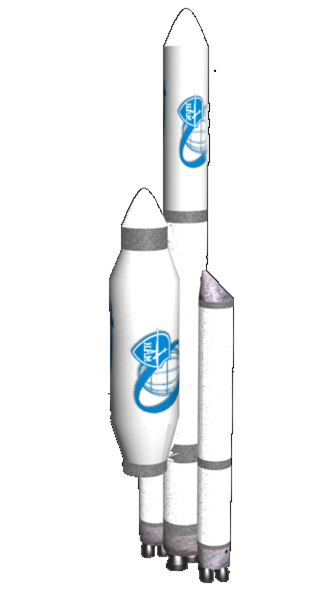 |
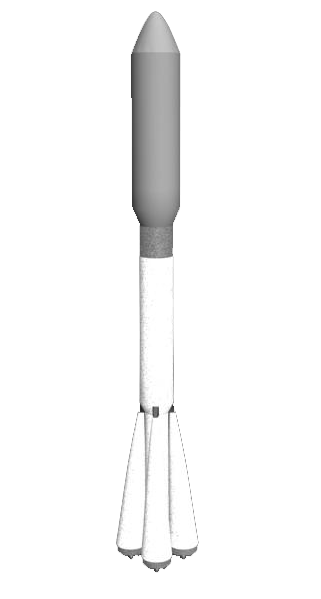 |
|
Mass of a payload is 46000 kg, height of base orbit is 200 km, diameters of the fairings are 5000 mm top, 6500 mm side. The fuel of the first stage are O2+H2 central, rocket kerosene+O2 sides, of the second stage is O2+H2. (The light designing). |
Mass of a payload is 13000 kg, height of base orbit is 200 km, diameter of the fairings is 5000 mm. The fuel of the first stage is rocket kerosene+O2, of the second stage is O2+H2. |
The inter-orbital spaceship:
The proper research and development work was done to prepare this segment of programme.
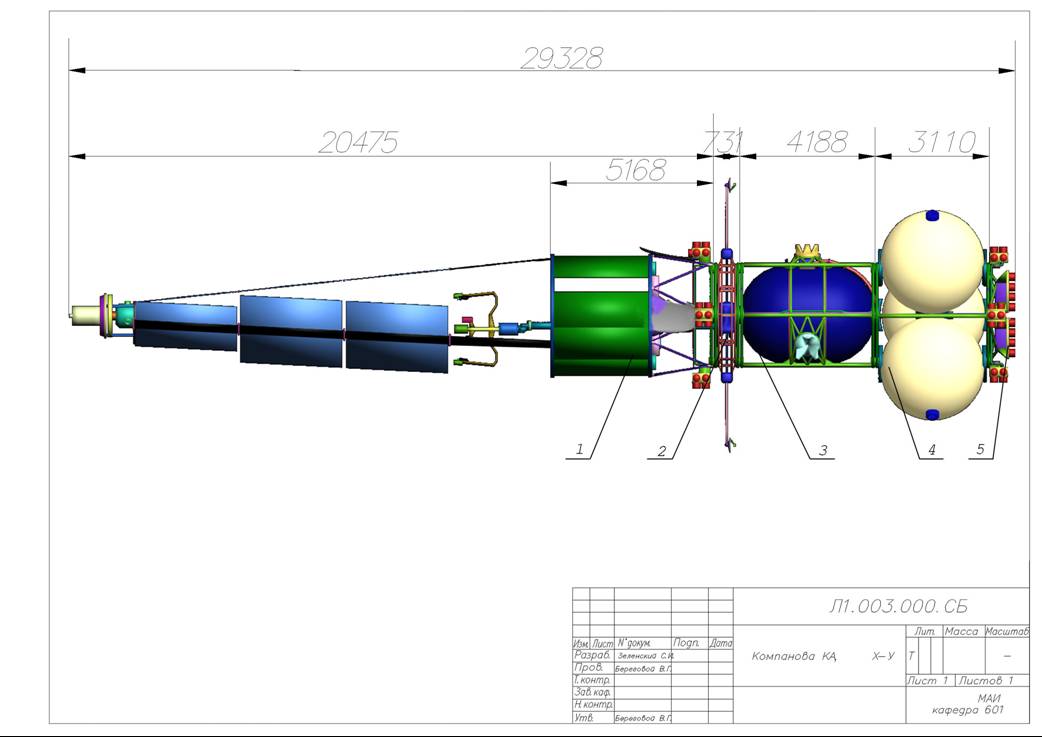 |
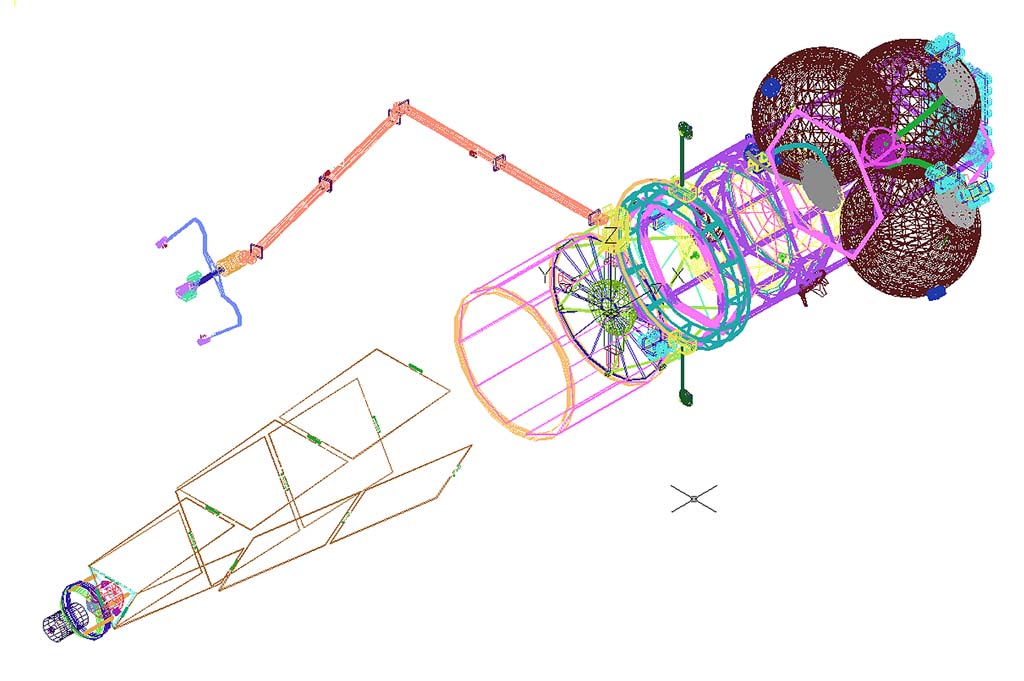 |
Orbits: The Earth orbit is circle H=800 km, Δi = 18,17 – 28,35˚.
The Moon orbit is circle H=90 km.
The mass without fuel and a payload is 17517 kg.
Main engines: RD-180, block of 48 engines. The main fuel is liquefied xenon (Xe) with temperature 43,2 below zero ˚С.
The power of the nuclear power-plant is 350-370 кW.
The total time of return flight is 352,1 days
Refuellers:
Two different types of fuel are used for the inter-orbital spaceship and the lunar module and the weight of it is also quite big. These problems forced to develop two independent refuellers.
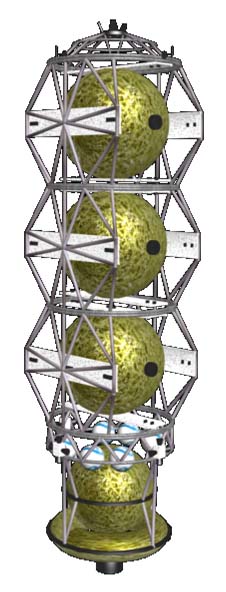 |
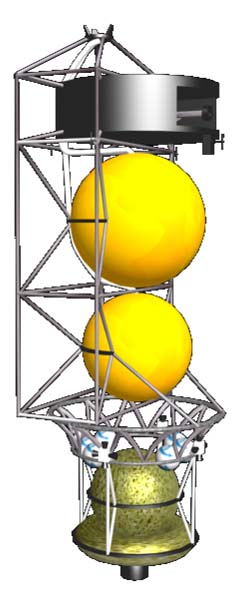 |
| The re-fuel of an inter-orbital spaceship with the main fuel (Xe). The empty mass is 4427 kg. (The light designing). | The breaking impulse for getting out from the orbit, carrying the fuel for a lunar module. The empty mass is 6750 kg. (The light designing). |
The decent apparatus was designed using SolidWorks 2004 CAD software.
The lunar module:
The type of fuel for lunar module is hydrazine+ nitrogen tetroxide. The empty mass is 1760 kg. (The light designing).
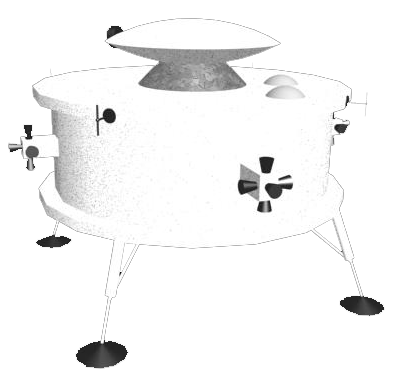
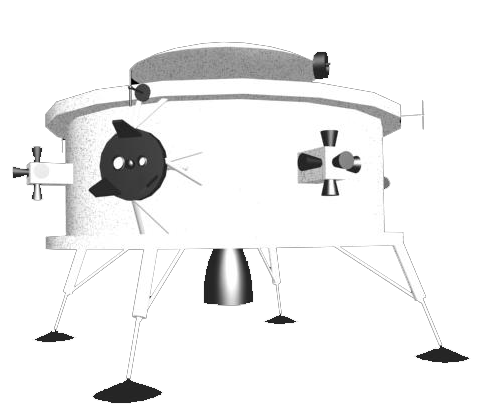
The separating and condensing lunar set:
The isotope separation occurs during a lunar night using the distillation method after the secondary gas mixture is liquefied. The energy sources: the solar energy, gas-generators using associated gases (Н2, 4Не). The empty mass is about 10500 kg.

The automatic extracting complex:
The fleet consists of five to eight extractive rovers by a separating lunar set. They use the rotary-conveyor principle of mining, with the direct extraction of light fractions from regolith. The empty mass is from 350 to 550 kg.
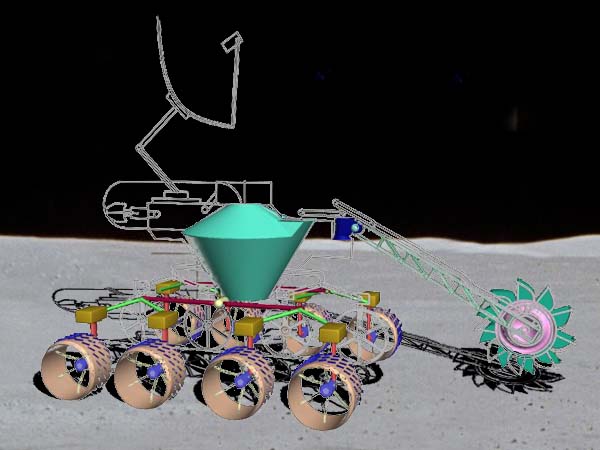
The strength calculations:
The iteration method was used to find the needful thickness of the rods. The method is the gradually increasing the thickness of the rods in the ground of overload.
The material of the truss: the aluminum alloy V95Т1. The rods of T-joint and the nuclear power-plant belt: carbon.
 1) The orbital injection |
 2) The transport operation |
 3) The flight |
 4) The docking |
Determination and calculation of some technological operations:
| The takeoff of a carrier rocket for putting into the orbit of the main module | The technology of the flying module refilling with fuel |
| The exchange of containers with the payload, fuel transfer to the lunar module | The lay-out scheme of the inter-orbital spaceship the Earth – the Moon – the Earth. |
 You are able to find a full collection of the diploma animation on YouTube.com
You are able to find a full collection of the diploma animation on YouTube.com
+++
Business-plan: "Commercial exploitation of the Moon’s mineral resources"
